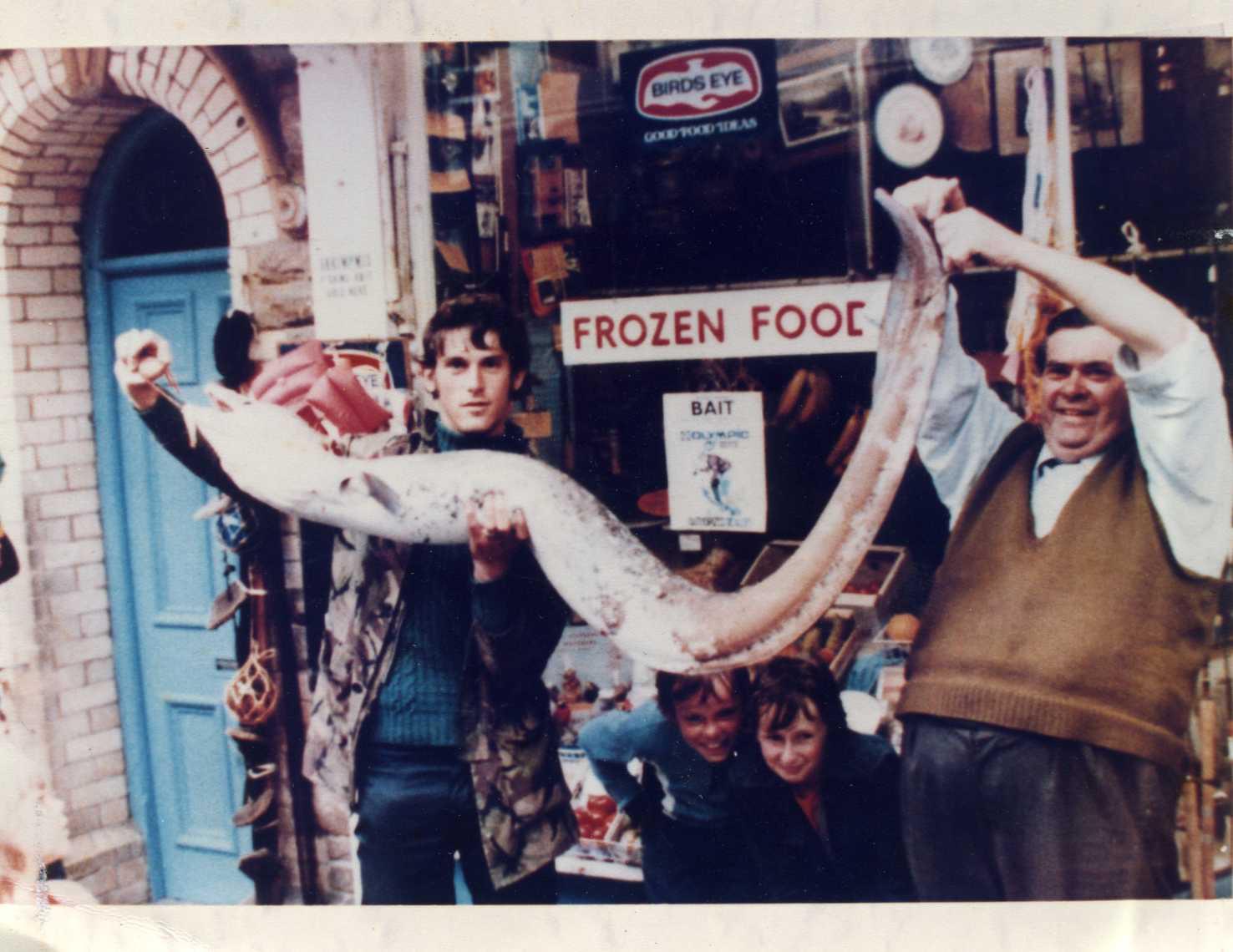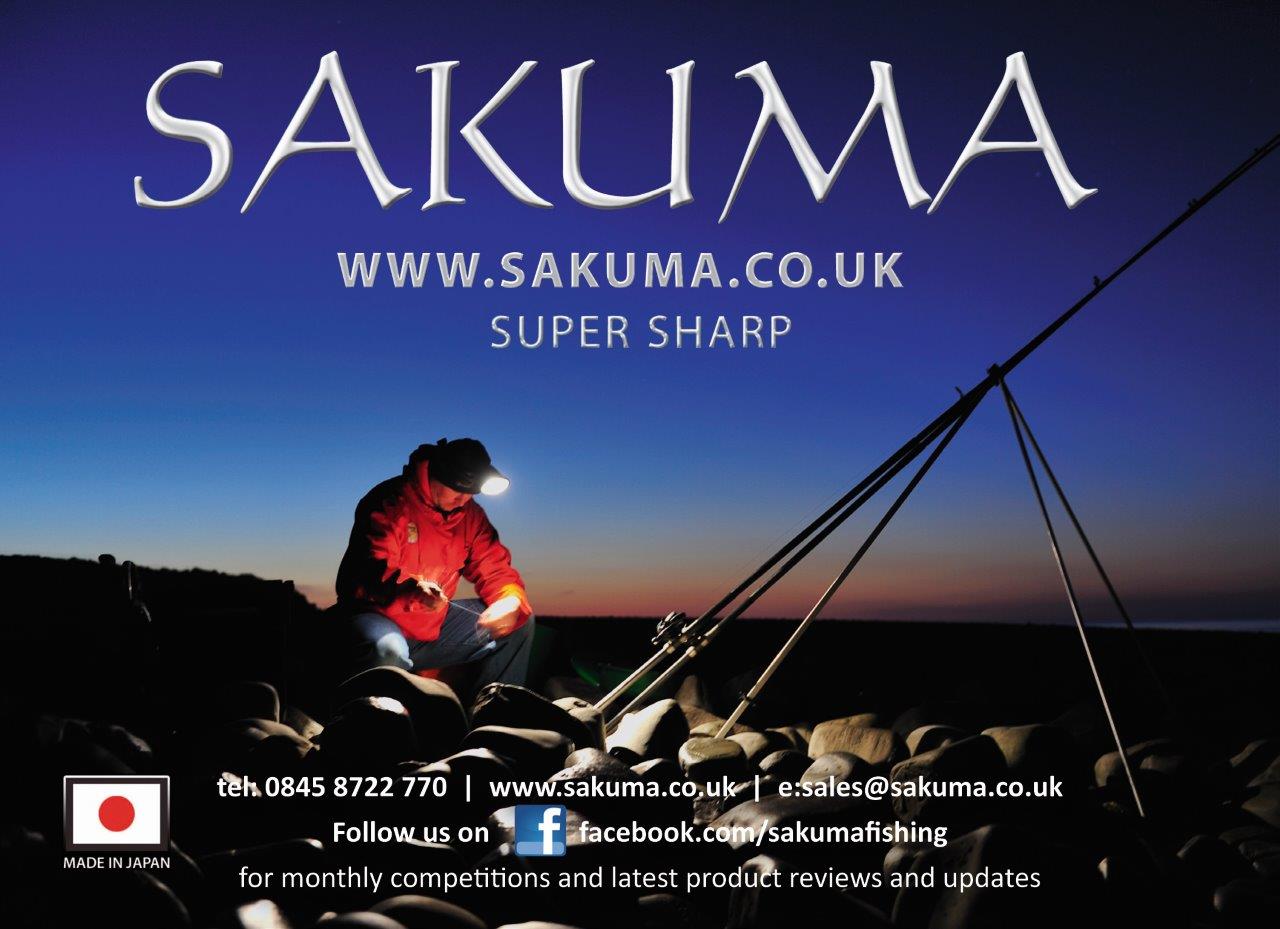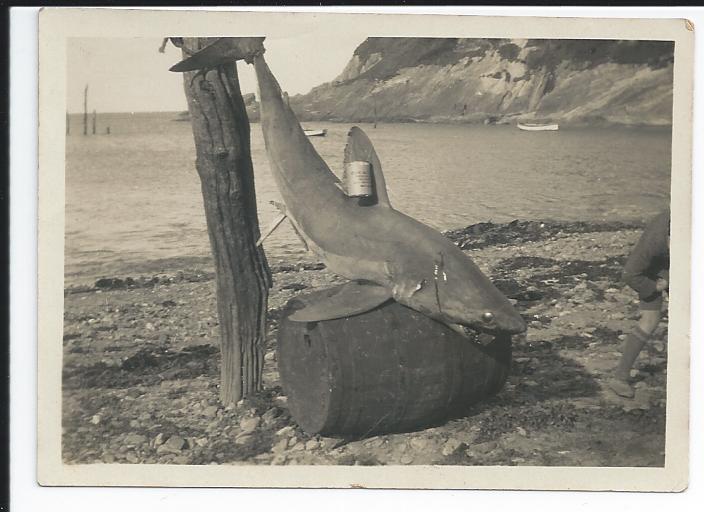
This article appeared in Exmoor Magazine earlier this year but I think worth re-airing it here on North Devon Angling News.
WHAT SWIMS BENEATH
Stand high on the cliffs that border the waters of the Bristol Channel and gaze out over the perpetually moving waters. As an angler you will perhaps ponder upon what swims beneath the waves.
Lundy Island marks the entrance of the Bristol Channel and beyond Lundy the vast Atlantic Ocean. It is thought provoking to look back on the evidence of the past and at what previous generations hauled from the depths. This paints a picture of a sea of plenty and highlights what we have lost through years of overfishing and poor management of our waters.
A few years ago I purchased the book ‘Lynton and Lynmouth’ Glimpses of the past. Within its pages is a fascinating peek into a bygone age of angling.
“In 1908 a party of anglers at Lynmouth boarded the boat Kingfisher skippered by Cecil Bevan and returned to port later that day with a haul of 675lb comprising of 35 conger, two skate, four cod and a Pollock.” A huge haul but what stands out is the capture of the two skate. Whilst many varieties of ray are referred to as skate; true skate have not been landed from North Devon waters for many years. Further reading revealed that Cecil Bevan’s angling expeditions off Lynmouth resulted in skate to 196lb.
These huge barn door sized fish were apparently prolific in the waters of North Devon and must have proved a real challenge to anglers as they used their huge wings to kite in the strong tides that surge back and forth everyday. Remember also that the tackle they used was far less efficient than todays hi tech tackle that has both finesse and strength. There is no reason huge fish cannot reside within our waters today the habitat is still perfect it’s just that commercial fishing pressure wiped them out. There are still areas around the UK where skate are caught and returned by sport fishers to preserve the species.
Porbeagle shark still roam the seas off North Devon they are no longer abundant but can be caught. Back in the 1970’s the Appledore Shark Angling Club fished the waters of Bideford Bay and off Hartland Point. One old photo given to me by Dave Rogers shows a catch of shark made off Ilfracombe. Eighteen-porbeagle shark lined up with the triumphant anglers. Such a sight would be totally unacceptable today but in those days nobody considered it possible to impact upon fish stocks.
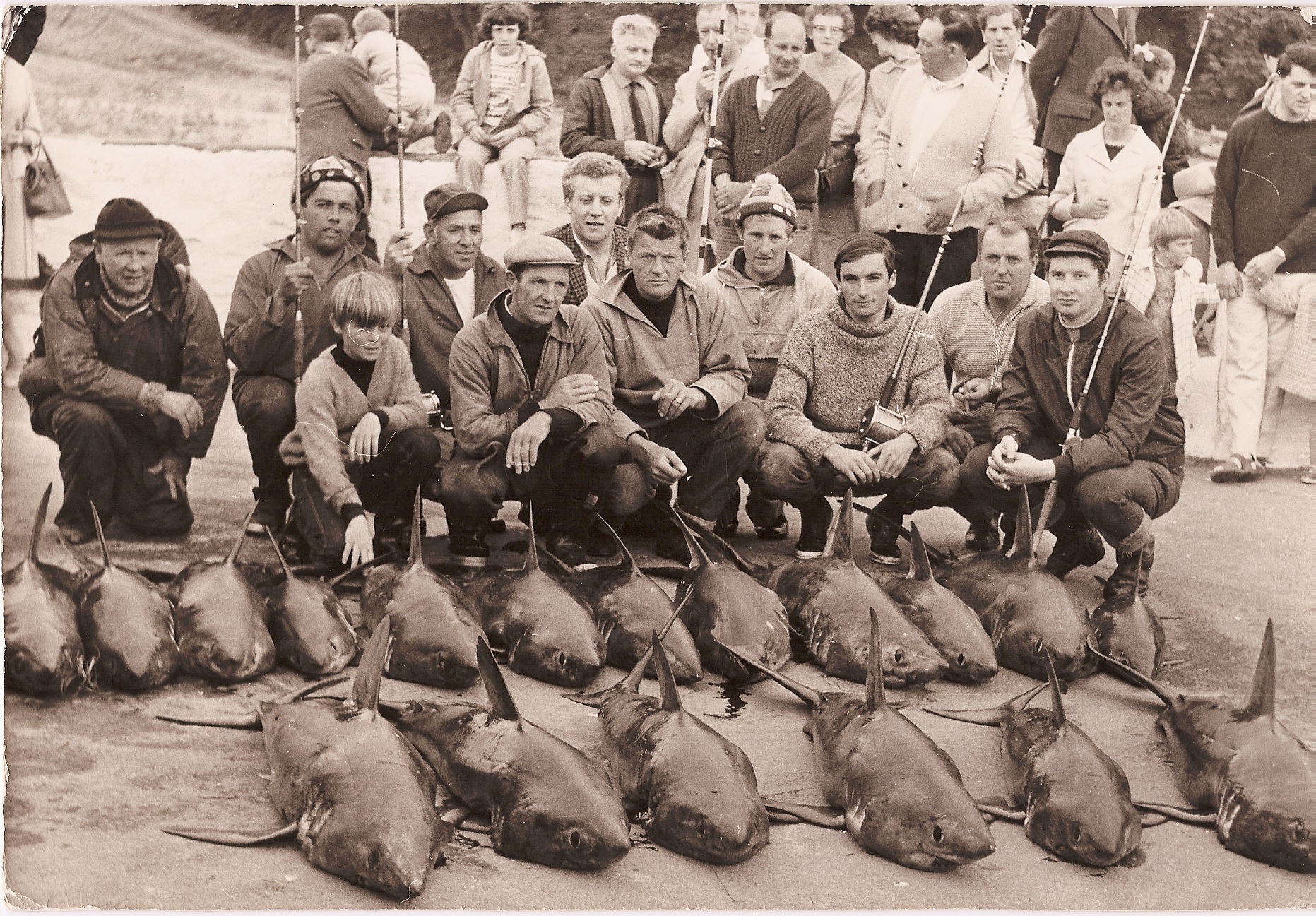
In addition to the well-documented porbeagle shark mentioned above I have also discovered pictures of shark caught off Combe Martin in the herring nets. These images discovered on the Combe Martin History Forums Facebook page are reproduced with kind permission of members of the group and show a porbeagle reputed to weigh around 500lb and eight foot long. William Watkins, Roy Watkins and G Mason caught the fish in herring nets off Heddon’s Mouth in 1951. It is unclear whether all the images on the forum are the same shark but it is clear that huge porbeagle hunted the herring shoals during the autumn months beyond the summer season normally associated with this fish.
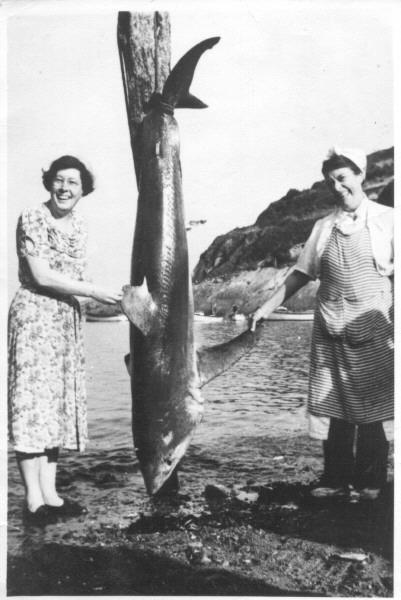
Another shark that frequents the North Devon coast is the tope. On November 6th 2006 Kevin Legge hooked and landed a specimen of 66lb that set a new British Record. In an uncanny chain of event’s Kevin was to beat his own record four years later on the same date in November with a fish of 66lb 8oz.
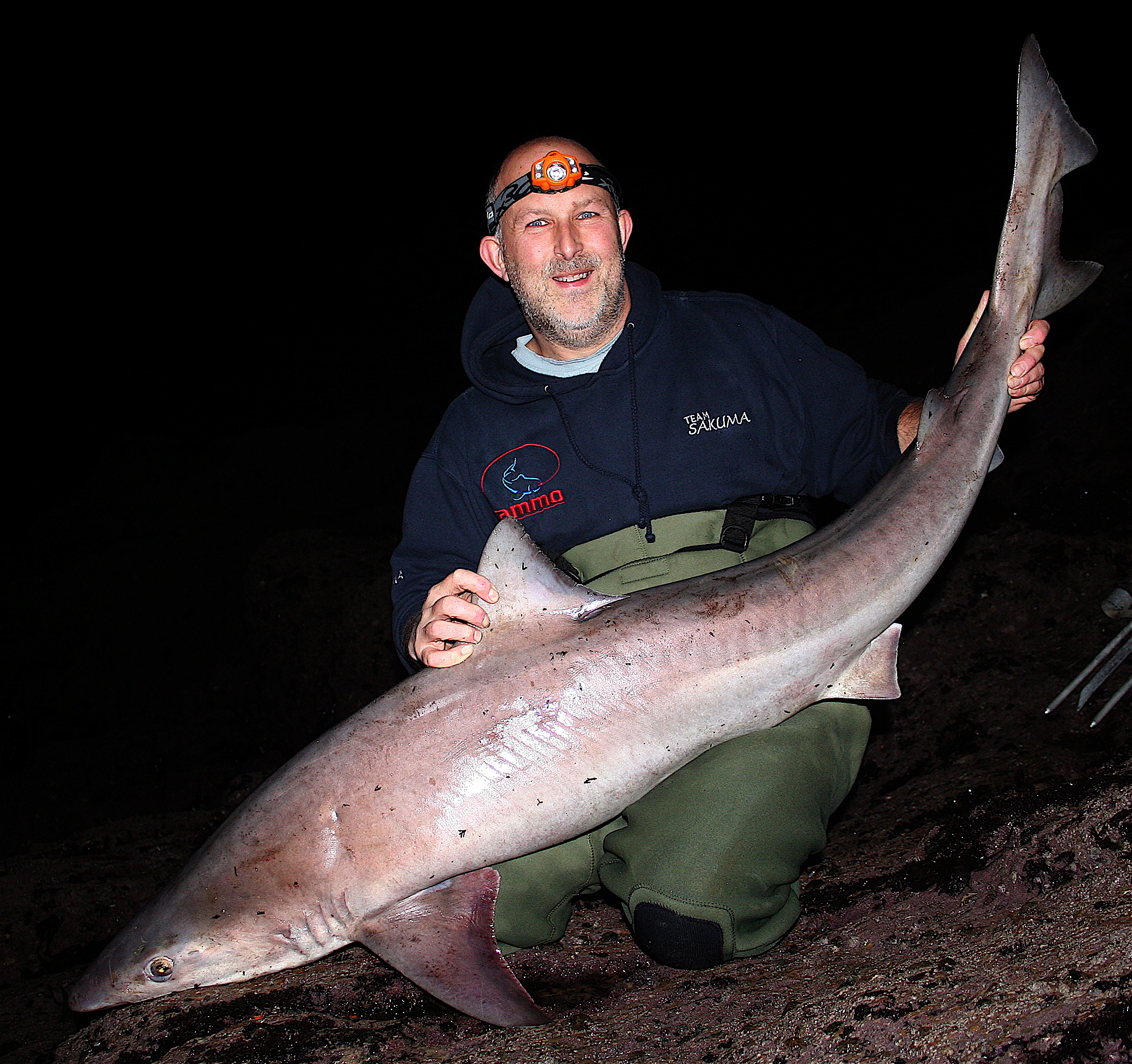
There are of course even bigger beasts swimming beneath the surface with whale sightings not uncommon. In July 2011 a fin whale was washed up on Lynmouth foreshore. Scientists carried out extensive research on the huge mammal before it was removed in a costly waste disposal exercise.
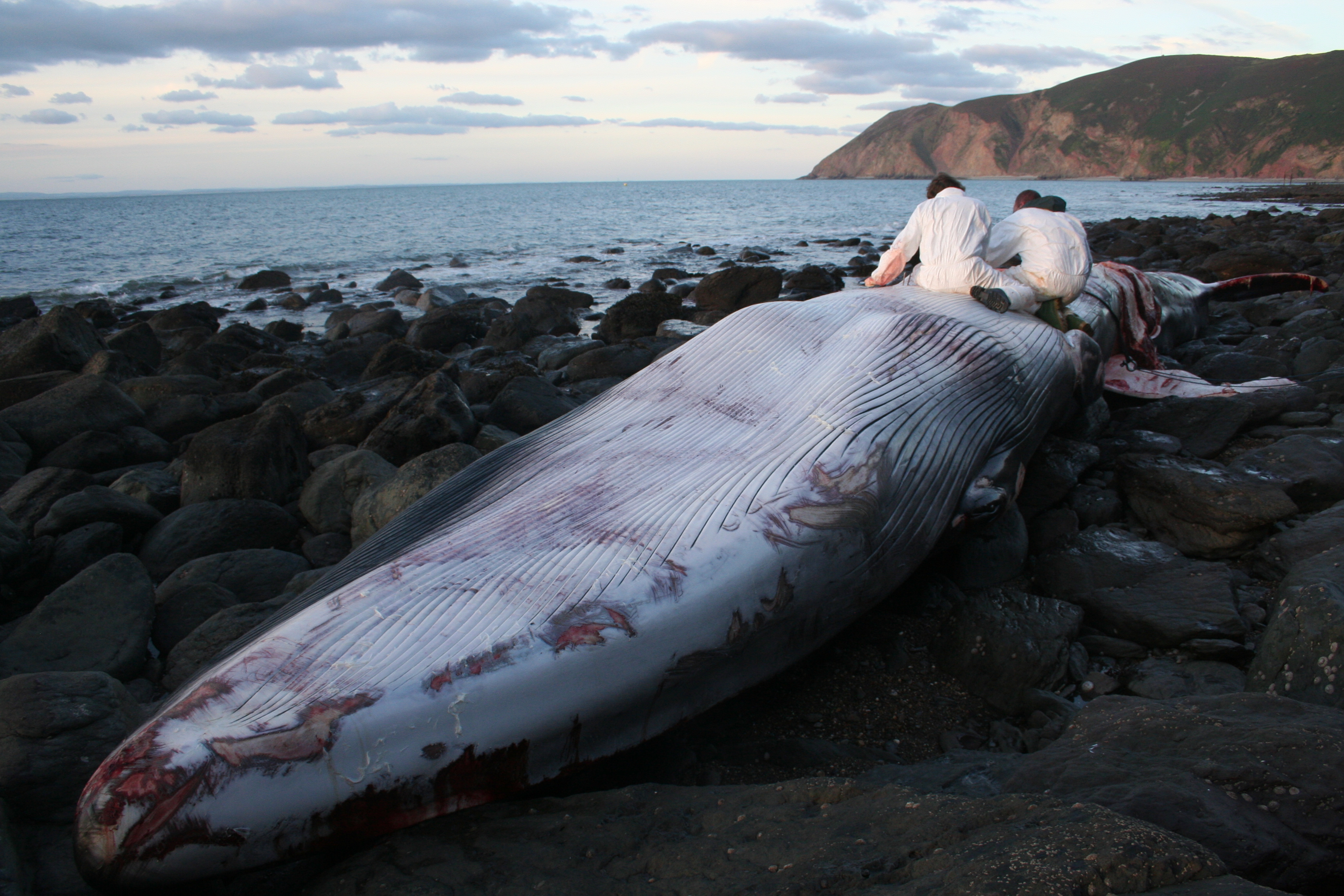
The waters off Exmoor and the North Devon coast have indeed been the home of leviathans over the years. Perhaps as climate change takes hold other species will move into these waters. Large shoals of tuna have frequently been sighted off the Cornish coastline. Who knows what sometimes swims within our coastal waters? The mysteries of the sea have intrigued generations and will I hope continue to so. There are no barriers as such within the seas and oceans other than that of climate.
Anyone who lived in Combe Martin during the sixties and early seventies will remember the Fruit and tackle tackle shop owned by the late Johnny Somerville. I found this old picture of a large conger caught sometime during the seventies!
